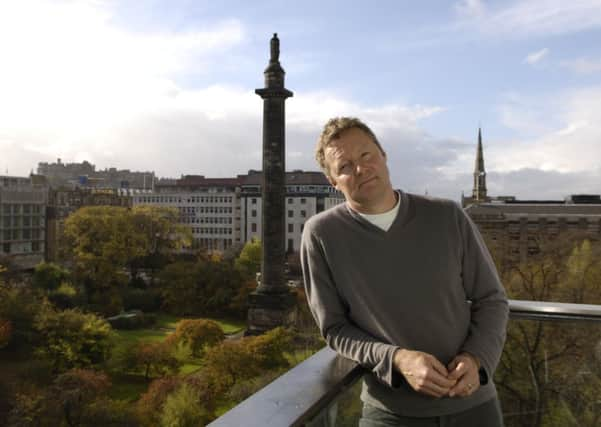Edinburgh’s DNA: A surprising discovery


Very Scottish indeed. Until I had my ancestral DNA tested.
It turned to be the same as BBC presenter Jim Naughtie’s and I went into Radio 4’s Today programme studio to talk about it. The discussion ranged far and wide and we talked about the red hair project in Scotland. I explained that it began because we have two red-headed children and neither my wife nor I had red hair (I don’t have much but it’s not red). Testing has shown that both parents have to carry the red hair gene variant – and even then only have a 25 per cent chance of having a red-headed child.
Then we moved on to talk about Neanderthal DNA. We all carry a little (I know a couple of Borders prop forwards who carry a lot), and between two per cent and four per cent of our whole genome comes from Neanderthals because our ancestors mated with them about 30,000 to 60,000 years ago, probably somewhere in the Near East. And they were not the knuckle-dragging, gormless stereotype portrayed in a thousand cartoons. They were almost certainly brave and resourceful.
Advertisement
Hide AdAdvertisement
Hide AdFinally the discussion came round to my fatherline, what the scientists call the Y chromosome. It turns out that my ancestors came from Scandinavia and northern Germany and it looks as though they came across the North Sea with the invasions of the Angles and Saxons. Or, the Anglo-Saxons. So, no way round this, it seems that my ancestry is Anglian, from people who came from Angeln in northern Denmark, the people who gave England its name. Not Scotland, England. When I came out of the studio, I got a text from my son. He had been listening. Not pleased. “Thanks, Dad. You broadcast to the nation that I have red hair. Guess I can’t deny that. I am part Neanderthal? OK, can just about cope with that. But ENGLISH!!!” I texted back that we don’t offer counselling.
But a bit more research was reassuring. My marker, S142 is carried by nine per cent of men in north-east England, Cumbria and Lancashire. And at four per cent in Edinburgh and the south-east, it is the highest frequency in what is now Scotland. That last phrase is the key. Scotland’s border on the Tweed and the Cheviots is relatively new.
From the early 600s onwards, for about four centuries, the Kingdom of Northumbria covered northern England and much of southern Scotland, including Edinburgh, and my marker is not really English, it is Northumbrian and about 20,000 men in the Lothians and the Borders carry it. Northumbrian and proud! Yes, we are incomers, but most of us have been here for about 13 centuries at least.
In fact my marker and the others like it (which might be called Germanic) are far more common in the east than in the west of Scotland. Ancestral DNA studies show that there is a real divide between Y chromosome markers in and around Glasgow and those in and around Edinburgh. In the west, 12 per cent of men carry the ancient Irish marker, the deposit of many centuries of migration. But in Edinburgh and the east, only five per cent of men carry it.
Advertisement
Hide AdAdvertisement
Hide AdThe opposite pattern is clear with the Germanic marker. In the east 17 per cent of all men carry it, while only nine per cent have it in the west. These are significant differences – and it could be argued by historians that they have been important through our history.
Edinburgh and Glasgow really are not just different sides of Scotland, they were destinations for people who came from different directions. East really is east, and west really is west.
• Alistair Moffat is managing director of ScotlandsDNA. He ran the Festival Fringe from 1976 to 1981, went on to become an award-winning documentary maker, director of programmes at STV and is the author of many books about Scotland’s history
Rory Bremner hails from right royal ancestors
Surnames are more suited to genealogy but they sometimes help with the much deeper ancestry we do at ScotlandsDNA.
Advertisement
Hide AdAdvertisement
Hide AdOr not. Bremner is a fairly common surname in Scotland and it should have helped in the search for the ancient origins of Edinburgh-born Rory’s fatherline. It derives from Brabanter, someone who came from those parts of Belgium, France, Holland and Germany that used to be part of the Duchy of Brabant. Brabanters traded across the North Sea, some settled in Scotland and became Bremners. But when we tested Rory’s Y chromosome, it took his fatherline in the opposite direction. He turned out to have Irish origins and carried the royal lineage of R1b-M222. It is believed that men who have this (in south-east Scotland five per cent of all men have this DNA marker) are descended from Niall Noigiallach, the first high king of Ireland. So far, no-one has bowed to Mr Bremner.